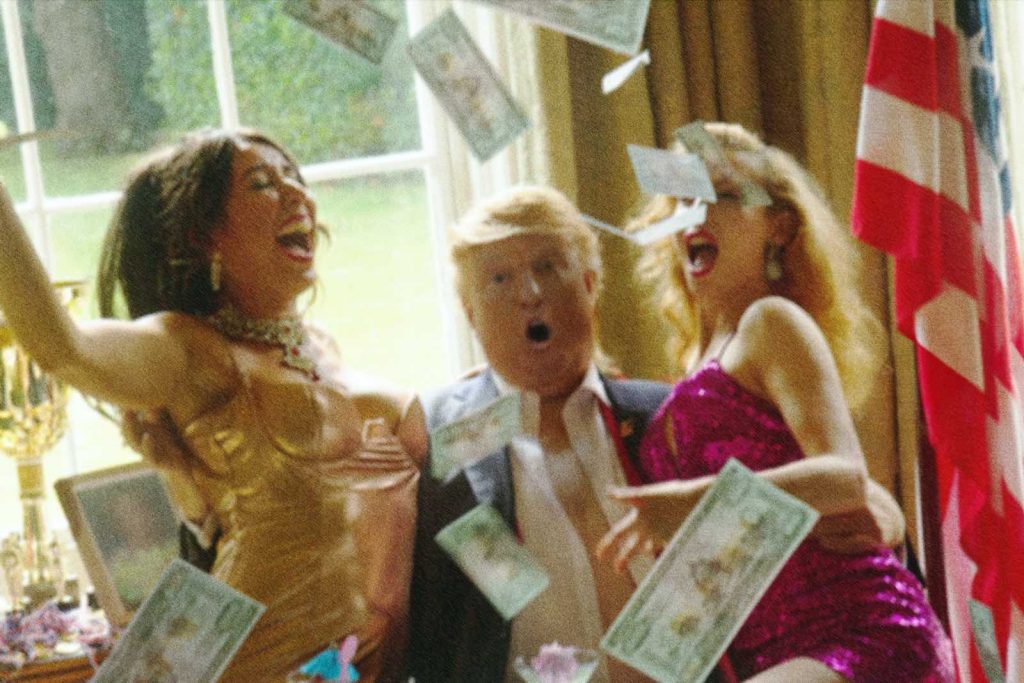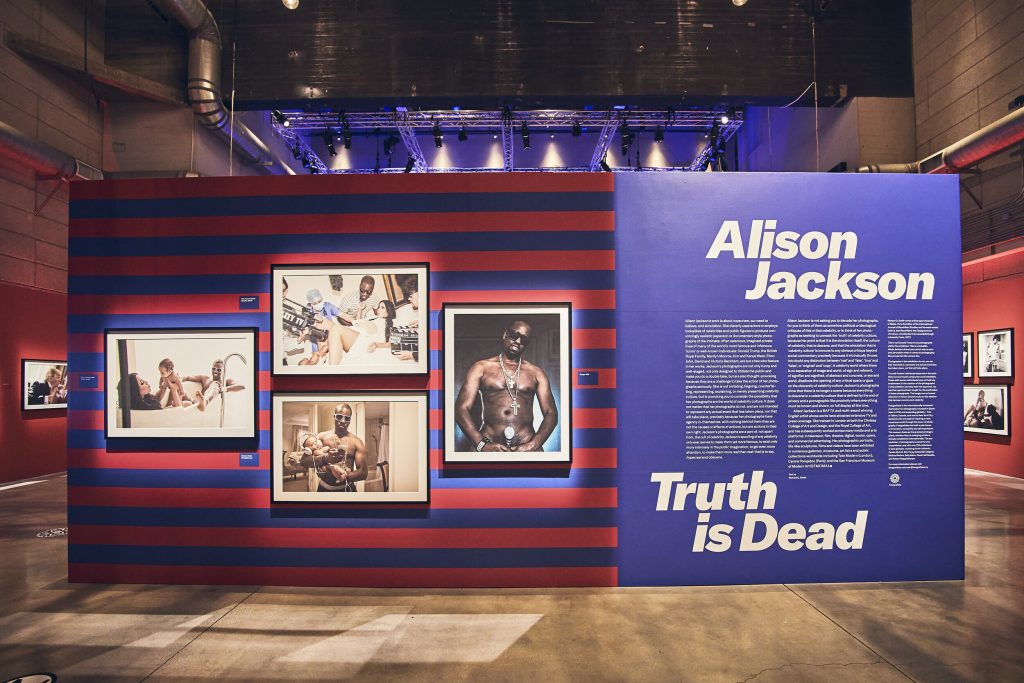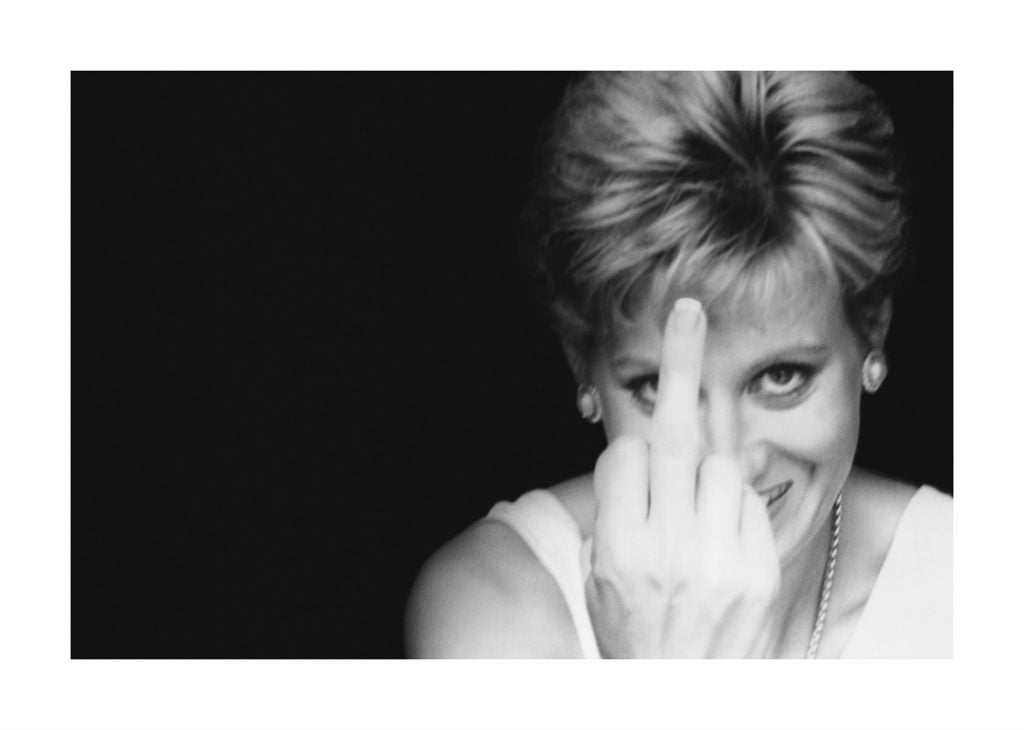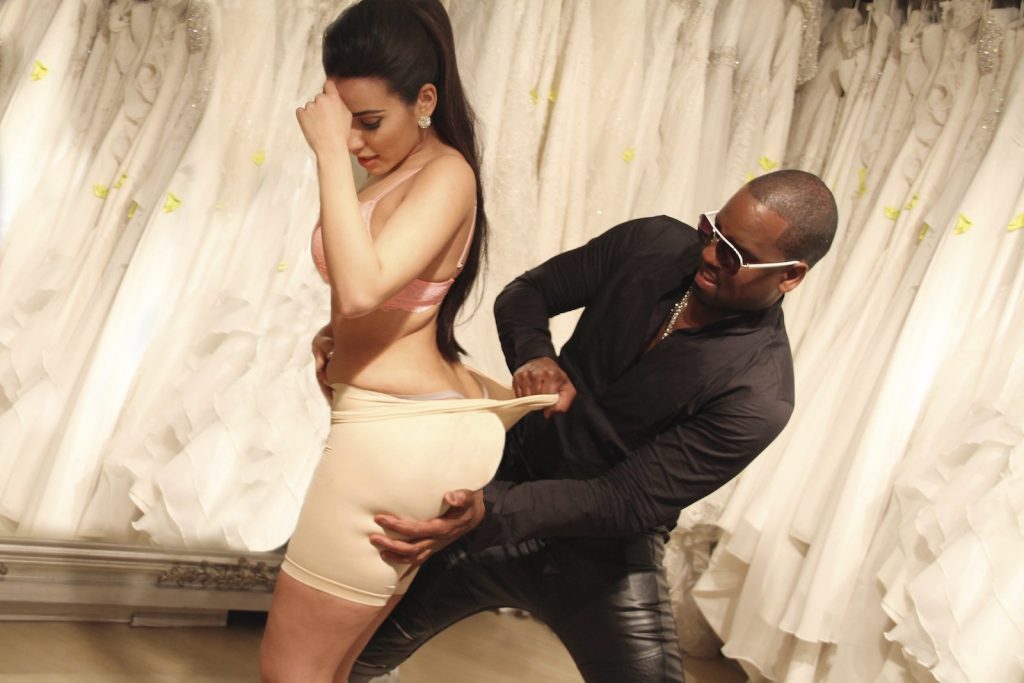‘Photography Plays This Fantastic Trick’: Alison Jackson on the Lies Pictures Tell and Her Staged Celebrity Lookalike Snaps


Artnet Gallery Network

For decades, British photographer Alison Jackson’s provocative photographs of celebrity lookalikes have held up a mirror to the cult of fame.
Her current exhibition, “Truth is Dead,” at Neuehouse Hollywood, is a look back on the past 20 years of her practice, with the British Royal Family, Donald Trump, and Kim Kardashian all making cameos.
Jackson stages photographs that at first glance look like paparazzi snaps of celebrities in compromising positions. One of her images, of what appears to be Donald Trump receiving a spray tan in the Oval Office, was so real-looking that editors at the fact-checking website Snopes took it upon themselves to debunk it.
Recently, we caught up with the artist to talk about her new exhibition, the hunt for a Joe Biden lookalike, and why she thinks Trump is going to be in the public eye for some time to come.

Installation view “Alison Jackson: Truth Is Dead,” 2020. Courtesy of Neuehouse.
Tell me about the work you’ve included in Neuehouse Hollywood exhibition “Truth is Dead.”
The work is from over the years, starting way back when I first started my career as an art student in the late 1990s through to 2020. The exhibition is like looking at a historical document of celebrity, and is broken out into a political section, a celebrity section, and a royal section.
The political section has people like George Bush, Hillary Clinton, Bill Clinton, and Donald Trump. The royals include Prince Harry and Meghan, of course, and the queen. The celebrities—well, there’s lots of Kim Kardashian.
Can we expect any images of Joe Biden?
I haven’t gotten to Joe Biden yet. I’m still looking for a lookalike. I’m desperate to find one—so put the call out. And I have to say, I think he’s going to be a little difficult because I normally rely on big hairstyles and things like that. And he’s so neat and perfect.
What first interested you in making these images that at first glance could be real?
Well, we can’t tell what’s real or fake anymore. Ultimately, we don’t care. And that fascinates me. Our first language is imagery. We might say, “oh an image isn’t real,” but then go ahead and quote the image as though it is real. Photography plays this fantastic trick on one’s brain: you know you’re not looking at something that’s necessarily a 100 percent real, but you can’t help but believe it. It’s just such a ridiculous situation.
This sparked off for me when Princess Diana died many, many years ago. The world came to a standstill and people mourned her death as if she was a close relative, weeping and sobbing in the streets. London came to a standstill. It affected the world over. It affected the media. And I just wondered, why? How did this woman get into our psyche without us even really knowing?
And why did we change our minds about her? Because at the time of her death, we all thought she was trouble. And then when she died, suddenly, within nanoseconds, she became sacred. And I just kept thinking: why?

Alison Jackson, Princess Diana Gives the Finger (1998). Courtesy of Neuehouse.
What did you find out?
Well, I tried to deconstruct the photography around her because that’s the only way we knew her intimately. What has the media done to us to make us love this woman so much, or hate this woman so much?
It’s a vicious circle: media and publicists build these people up, then we become desperate to know about the celebrities. We start to live vicariously through them and we assume a kind of power over them where we can build them up and pull them down with a switch-off of the television or by buying a magazine or not buying it.
Very few of us actually meet them in person and yet they are part of our family. Celebrities become like little saints where they each represent something different.
There have been lots of conversations about the current proliferation of misinformation, with a lot of it focusing on social media. Do you think that these trends are more exaggerated than say 20 years ago?
I think every time you have a new distribution platform, you’re going to have one platform criticizing the other. The socials are just a relatively new distribution channel where people can add their voices and be seen and heard. Before, you just had traditional media of television, before that newspapers and the silver screen. So traditional media is knocking the socials, but traditional media has created fake news in the same way. The fact of the matter is the stories are edited so that you’re seeing the truth through somebody else’s eyes.
What is photography’s role in that?
Pictures seduce you into believing one story when it could be a totally different story in reality. The Guardian newspaper did a wonderful project in the ‘80s, where they told the same story in ten seconds, three times. Each time the same story was shot from a different angle. The real nugget is that the very nature of photography is a demon. It’s a slimy, deceitful, seductive, and highly powerful medium, which will send your brain rocking. It always depicts a half-truth or a grain of it. It’s a bit like a good liar that leads us up the garden path. And this is our main source of information today. The reason I started creating this whole body of work is that I hated photography so much and how it manipulates us. On my photographs, I have to put “This is not Donald Trump” or whomever because people just assume it to be true. If you think it’s a real celebrity, you’re screwed.

Alison Jackson, Kim Struggles into Spanx (This Is Not Kim Kardashian). Courtesy of Neuehouse.
Is there a way to undo that effect?
No, I don’t think there is because we love it. More and more, we’re losing the value of text and we live our lives more and more by pictures. I’ve noticed that people under the age of 25 don’t really talk that much because they’re too busy looking at pictures of their phones. Pictures give half the story that you can project onto that. I can’t see that ever going away. I think that perhaps you can make people aware and can educate everybody. But it’s difficult to educate and really understand that when you’re looking at such a seductive medium, which is what the lookalike images are trying to say.
How do you think that the pandemic has influenced celebrity culture?
It’s a disaster for celebrities because they need a real audience as well, you know. They need pictures on the red carpet so people can be envious. You know, and probably a lot of celebrities are sitting around now doing the same things as the rest of us.
Do you think that Trump will stay in the public eye—and your work—even after he’s out of office?
Donald Trump understands the media through and through. As a young guy, he was fascinated by TV and would spend all his days watching TV. He’s a master in the art of media manipulation. Everything he does is for PR—that’s what he wants because he has to be the most talked-about person in the world. And the media follow him around like a little chirping chorus. I do think Donald Trump is still going to be a big player in the media landscape even after he’s out of office. And he looks like a celebrity, not a politician, you know?
What do you mean by that, looks like a celebrity not a politician?
If you think of major rock stars over the years, they all have an over-the-top quality—Elton John with the big glasses, Jimmy Hendrix with a big hair, Cher, with all the surgery and that she did.
Donald Trump obviously has unique selling points—hair, the ridiculous orange tan with the white around his eyes. We like to see those statements. He’s got it down to a key—he likes to look fake and we like it too.
Alison Jackson’s “Truth Is Dead” is on view at Neuehouse Hollywood through December 18, 2020.